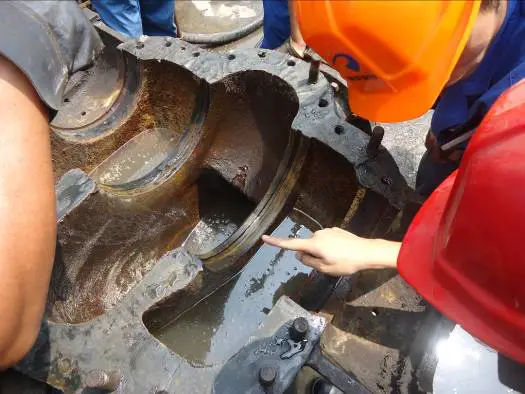Repair method of circulating pump wear
The wear repair methods of circulating pumps vary according to the wear location, degree and type of pump (such as slurry circulation pump, clean water circulation pump, etc.). The following are some common wear repair methods for circulating pumps:
1. Repair after welding
Applicable situations:
Applicable to wear problems of parts that are easy to disassemble and easy to process.
Methods and steps
Repair the worn parts and fill the worn metal materials.
Restore the original matching size and shape of the parts through machining.
Advantages:
High repair accuracy.
Disadvantages:
The repair process is prone to thermal stress concentration, which may cause bending and deformation of the shaft.
The repair process cannot completely avoid thermal stress problems, which may increase the risk of cracks or even fractures during the use of the shaft, increasing production safety hazards.
2. Repair by brush plating process
Applicable situations:
Applicable to online repair scenarios with small wear.
Methods and steps:
Use brush plating technology to brush a layer of metal coating on the worn parts.
Advantages:
Online repair can be achieved without large-scale disassembly of equipment.
Disadvantages:
The thickness of the brush-plated coating is limited, generally less than 0.2mm. When the wear amount is greater than 0.2mm, the efficiency of brush plating will decrease exponentially.
When the brush plating layer is too thick, it is easy to fall off during use and has a short service life.
3. Polymer material repair technology
Applicable situations:
Applicable to various types of circulation pump wear repair, especially in scenarios that are difficult to disassemble or repair online.
Method steps (taking Solei carbon nanopolymer material as an example):
Clean the impurities in the worn parts and perform necessary roughening treatment on the substrate.
Apply polymer materials (such as carbon nanopolymer materials) to the worn parts and use the adhesion and comprehensive mechanical properties of the materials for repair.
Perform curing treatment as needed.
Advantages:
Good adhesion, good comprehensive mechanical properties such as compressive resistance, wear resistance and elastic deformation.
High repair efficiency, low repair cost and good repair effect.
No need to disassemble a large amount of equipment, generally the repair can be completed within a few hours.
No high temperature will be generated during the repair process to protect the equipment body from damage.
Disadvantages:
High requirements for the selection of repair materials and repair processes.

4. Other specific material repair technologies
Such as slurry circulation pump erosion wear repair:
Use specific materials such as LT227 silicon carbide wear-resistant repair agent and LT256 brush-coated ceramic protective agent.
Repair is carried out through sandblasting, cleaning, application of repair agent, curing and other steps.
This method is suitable for specific types of pumps such as slurry circulation pumps, which can enhance the bonding strength and corrosion resistance of the repair material and the substrate.




